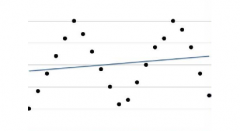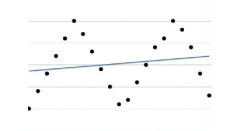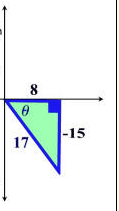![]()
![]()
![]()
Use LEFT and RIGHT arrow keys to navigate between flashcards;
Use UP and DOWN arrow keys to flip the card;
H to show hint;
A reads text to speech;
15 Cards in this Set
- Front
- Back
|
What is the amplitude of the function y=3tan(4x/8)?
|
The amplitude of the function y=3tan(4x/8) is 3.
|
|
|
Calculate the period of π/3.
|
The period of π/3 is 4π/3.
|
|
|
What is the amplitude of the function y=9cos(3x/8)?
|
The amplitude of the function y=9cos(3x/8) is 9.
|
|
|
If tan(x)=12 what is the value of sin(x)? (Round to the nearest hundredth.)
|
sin (x)= 0.99
|
|

The following tables show the height above the ground of a point on a bicycle wheel as the bicycle is wheeled along a flat surface. Plot the graph of height against distance.
|

|
|

Based on your plot, is the data periodic? If so, estimate the equation of the principal axis, maximum value, period, and amplitude.
|
Yes, the data is periodic; it follows a cyclic and somewhat predictable pattern.
The equation of the principal axis is y≈10. The maximum value is y≈20. The period is about 275, and the amplitude is about 10. |
|
|
Use the inverse function of sine, cosine, or tangent to solve this problem: Given cot θ=-8/15 and cos θ>0, find the exact value of sinθ.
|

tan θ=-15/8
θ=tan⁻¹(-15/8) sin(tan⁻¹(-15/8)) Since the cosine is positive, we are working in either quadrant I or IV. Tangent is negative in quadrant IV, so we are working in quadrant IV. 8²+15²=x² x=17 sin θ=-15/17 |
|
|
None of the six basic trigonometry functions is a one-to-one function. What limitations can be put on these functions to make them a one-to-one function?
|
Restricting the domain of trigonometric functions can make them a one-to-one function.
|
|
|
When the domain of a trigonometric function is restricted, each function has an _________.
|
When the domain of a trigonometric function is restricted, each function has an inverse.
|
|
|
What is the domain restriction on the sine function that will make it a one-to-one function? What is the inverse of the sine function and its domain restriction?
|
y=sin(x) for -π/2≤x≤π/2
y=arcsin(x) for -π/2≤y≤π/2 |
|
|
What is the domain restriction on the cosine function that will make it a one-to-one function? What is the inverse of the cosine function and its domain restriction?
|
y=cos(x) for 0≤x≤π
y=arccos(x) for 0≤y≤PI |
|
|
What is the domain restriction on the tangent function that will make it a one-to-one function? What is the inverse of the tangent function and its domain restriction?
|
y=tan(x) for -π/2<x<π/2
y=arctan(x) for -π/2<y<π/2 |
|
|
What is the domain restriction on the secant function that will make it a one-to-one function? What is the inverse of the secant function and its domain restriction?
|
y=sec(x) for 0≤x≤PI, except π/2
y=arcsec(x) for 0≤y≤π, except y=π/2 |
|
|
What is the domain restriction on the cosecant function that will make it a one-to-one function? What is the inverse of the cosecant function and its domain restriction?
|
y=csc(x) for -π/2≤x≤π/2, except x=0
y=arccsc(x) for -π/2≤y≤π/2, except y=0 |
|
|
What is the domain restriction on the cotangent function that will make it a one-to-one function? What is the inverse of the cotangent function and its domain restriction?
|
y=cot(x) for 0<x<π
y=arccot(x) for 0<y<π |

